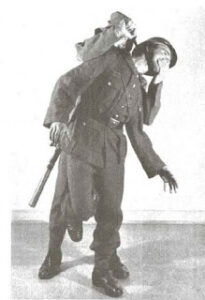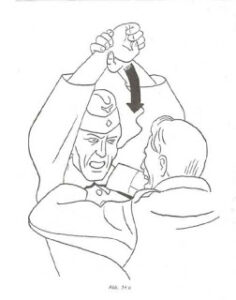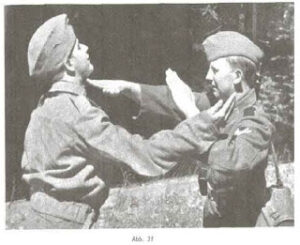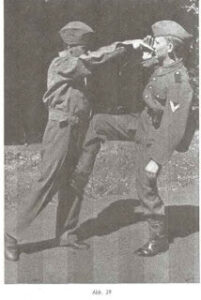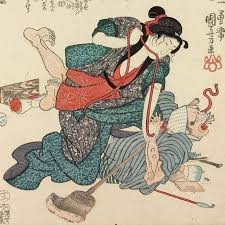A couple of years back I came across a Youtube video that was called something like “Close Range Knife Defense”.
This one was notable since it involved several young men having a great time fast-drawing their guns and shooting down imaginary attackers. Their speed and skills were impressive, their tactics deplorable.
Even if you can kill a charging attacker instantly, he is still likely to travel several metres.
This may be enough to knock you down.
If he had a knife this may arrive point first, resulting in you being injured or killed by a man already dead.
The chances are you will not achieve an instant kill every time. Even if your attacker is fatally wounded, he may use the final seconds to knock you down, stick his knife in you or thrust his thumb in your eye.
Remember, many victims of knife attacks are not aware of the knife until stabbed or cut. Always treat an aggressor as though they are armed.
You may not fatally wound him. Even the best of us miss occasionally when shooting under stress, drawing gets caught up on clothing or weapons misfire or malfunction.
If the charger was unarmed, you are still in trouble. If he knocks you down he can stomp you to death or take your weapon to use against you.
I have tried to emphasize in my book that defence and evasion must come before counter-attack.
If you have a weapon sheathed and you are attacked, your first response should not be to try and attempt to draw the weapon. You cannot outdraw him if his weapon is already drawn.
In a fast-draw competition, the odds are not good either since the attacker will have the advantage of initiative.
Even if your weapon is already in hand, it is prudent to combine using it with some evasive/ defensive action.
If an enemy appears suddenly before you, you don’t have time to see if he is going to charge you or open fire on you. Don’t stand were you are, move! Better a moving target than a sitting duck.
Let us return to our original example of the young men with pistols.
If their drill had been realistic, they would have executed some form of evasive action before they drew and fired. By having one of their number play the aggressor, and using some toy guns, this could prove a fun but very useful practice session.
In martial arts, considerable attention is paid to blocking and parrying techniques but generally these are concentrated on defending against hand strikes and kicks.
Some attackers will not move into a set distance and start throwing kicks and blows.
In our example above, we considered a knife-armed attacker charging a gun-man, but there are many other situations where one party may try to rush and overwhelm another.
Fighters who favour groundwork will want to get close to their opponent and get them to the ground as quick as possible.
Defending against an enemy that charges seems to be something some martial arts would rather not think about.
Yes it is crude and brutal. Whether it is unskilled or not is irrelevant.
It is a real and likely threat and can be very effective, particularly if you have never bothered to practice against it.
What defences are there against a rush? The primary defence remains the use of evasion.
The ginga movement from Capoeira that is included in my book is very good for teaching side-stepping and other evasive footwork.
Also useful is the hip-twist move that is the basis of in-quartata and certain kicking actions.
If your dodge does not take you sufficiently out of harm, you must combine it with a parrying action.
A charging opponent will have a lot of momentum, so blocking his force directly is not a practical option. We need to parry to redirect it.
Parrying his hands or forearms is not likely to have much effect. There is no point in knocking these aside if the body behind still knocks you down.
Parry against the upper arm, shoulder and torso regions. Use both your arms to make contact.
The p’eng hinge action detailed in the book can be easily adapted for this action, as can several other techniques such as the double-handed push, the shoulder check and the outside crane.



